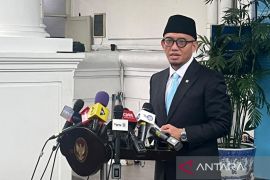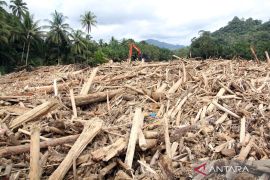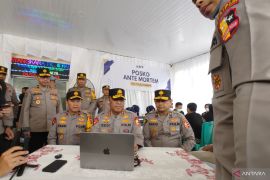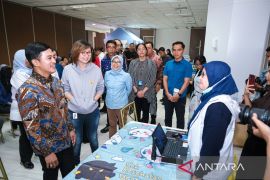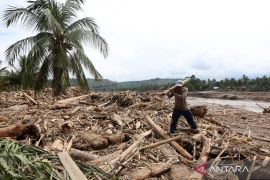The Central Bureau of Statistics (BPS) said the economy grew 5.06 percent in the January-March period in 2018 as against growth rate of only 5.01 percent in the same period last year.
Hope is high that the economy would grow further after data in the following quarter indicated better performance with the growth recorded at 5.27 percent.
In the third quarter the growth rate fell but remained fairly strong at 5.17 percent. Averagely the economy grew 5.17 percent in the first nine months of the year.
The performance, however, still fell short of the target of 5.4 percent set for 2018. It is predicted that the economy would grow 5.1-5.2 percent in 2018 .
Observers said next year , the economy is expected to grow by about the same rate as in 2018. They said it would be difficult to reach the target of 5.3 percent set in the 2019 state budget amid the great global uncertainty worsened by the trade war between the world`s economic giants, the United States and China.
Spending by the government could be increased to speed up growth but two main drivers of the economy - exports and investment are predicted to remain under pressure yet. Household consumption, which has been the main driver of economic growth so far is expected not to expand from the growth level of 5 percent as recorded in 2018.
However, a number of government policies aimed at increasing the income and purchasing power of the people such as an increase in civil servants salaries and social security for civil servants, the military and police , increase in social aid for poor families and increase in regional minimum wages could shore up the household consumption.
In addition, the legislative and presidential elections held at once would contribute to pushing up consumption of the private sector. The allocation for social aid will increase 26.7 percent in 2019 after a sharp rise of 42.6 percent in 2018.
Although separately the impact of each of the policies might not be very significant on household consumption, together they would make a big driver for economic growth next year.
Executive Director of the Center of Reform on Economics (CORE) Indonesia Mohammad Faisal said the economic challenges in 2019 would be heavier, but the opportunities are open wider. Faisal said the government needs to be more innovative in seeking a solution to national economic problem amid the global economic pressure.
"The government must not use instant approaches for the uplifting of economic performance ahead of the political contest. The government should at least be able to keep the people purchasing power from falling lower as the household consumption is the main driver of the country`s economic growth," Faisal said.
Keeping the oil fuel (BBM) price from rising in the country is crucial to prevent a surge in inflation that would weaken the purchasing power of the middle to low income people, he added.
In addition, Bank Indonesia needs to be cautious in maintaining rupiah stability to keep the confidence of the consumers and the business players in the country, he said.
As for inflation , the government has succeeded in keeping the inflation low in the past four succeeding years, but the achievement was not followed with an increase in economic growth. Vietnam and Malaysia had recorded an increase in economic growth when their inflation was low. Indonesia succeeded in keeping its inflation as 3 to 4 percent but the country`s economy grew stagnant at around 5 percent.
Meanwhile, an economic analyst said the low inflation was more a result of low purchasing power.
Low inflation would reflect success if it comes with stronger economic growth, a researcher of the Institute for Development of Economics and Finance (INDEF), Eko Listyanto said.
"The fact is that the relatively low inflation does not come with acceleration in economic growth, therefore the low inflation is more a reflection of low purchasing power," Eko said.
He said currently the largest part of the income of the people of the middle to low income bracket is for food. If the government failed to maintain food price stability the implication would be extensive . Demand for non food products would shrink on weak purchasing power.
Shrinking purchasing power would result in low economic growth as household consumption is still the main driver of the country`s economic growth.?
The economic growth trapped at 5 percent despite injection of growing spending by the government indicates weak budget stimulus. The effect is delay in investment plan with investors choosing to wait and see resulting in the degradation of country`s position in easy of doing business index.
Meanwhile, the country is not expected to be able to do much in improving its export performance in 2019 with protracted global economic turbulence mainly as a result of the U.S.- China trade war. The condition in the global market is not yet favorable to allow Indonesia to significantly increase its export. The economic growth in the country`s major trading partners including the United States, China and Europe is predicted to slow down that expansion of exports to those countries could not likely be as expected.
The International Monetary Fund (IMF) has predicted the Chinese economy would be slower in growth from 6.5 percent in 2018 to 6.2 percent in 2019, and the U.S. economic growth is predicted to be lower at 2.5 percent from 2.9 percent in 2018.
Similarly, the European Union is predicted to chalk up a growth of only 2 percent slowing from 2..2 percent in 2018.
Even ASEAN is predicted to suffer correction in its economic growth from 5.3 percent in 2018 to 5.2 percent in 2019.
Economic slowdown in major trading partners would likely weaken demand for imports by those countries. At the same time the prices of a number of export commodities from Indonesia such as palm oil, rubber, and coal have tended to decline. Meanwhile, major export destination countries including the United States, Europe and India adopted more protective import policy.
In fact , indications of falling exports to major markets have been seen since early 2018. In the first 10 months of the year , the country`s exports of commodities other than oil and gas grew only 3.7 percent as against a 10.3 percent growth recorded in the same period last year. Exports of commodities other than oil and gas to China still grew 22 percent but it was less than half of the growth recorded in the same period last year.
The rupiah depreciation had no much effect on exports. Normally, falling value of rupiah would boost exports. Worse still is performance in the exports of manufactured goods. Exports of manufactured goods grew only 5 percent as against a growth of 22 percent recorded for the commodity exports in the January-October period this year.
When exports were under heavy pressure, acceleration of import had been almost out of control in the past two years despite the restrictive import policy adopted by the government. The government has announced restriction on imports for certain goods in a bid to redress the country`s trade balance and curb increase in current account deficit.
The country`s exports have been dominated primary by commodities but its imports are dominated by manufactured goods and industrial basic materials.
In investment, cumulatively until the third quarter of this year Gross Fixed Capital Investment (PMTB) grew 6.91 percent , stronger than the growth of 5.75 percent recorded in the same period last year.
Unfortunately , after fairly high growth recorded in the past several years investment began to slide notably for foreign investment. Data at the Capital Investment Coordinating Board (BKPM) showed contraction began to be recorded in foreign capital investment in the second and third quarters of this year respectively by 13 percent and 20 percent.
In addition to global economic slowdown the momentum of political year in the country makes investors to choose to wait and see as it was before the general election in 2009 and 2014. Investment growth slowed before the presidential election.
Though slowing investment in 2019 is expected to grow around 6 percent . Service sector is expected to be the driver of growth in the investment sector related to infrastructure projects. The spending budget for infrastructure in 2019, which is set at Rp420.5 trillion or larger than the budget of Rp410 trillion set for this year is expected to help drive the country`s economic growth next year.
Editing by Suharto
Reporter: Citro Atmoko/A. Saragih
Editor: Heru Purwanto
Copyright © ANTARA 2018







